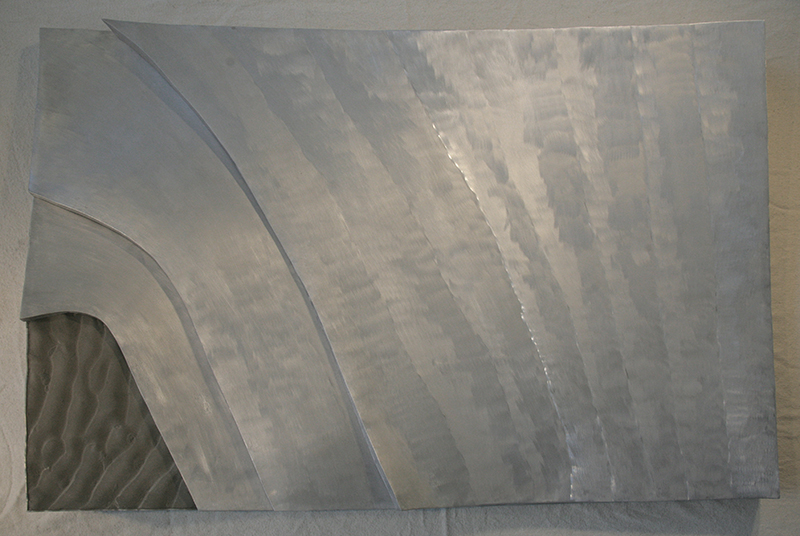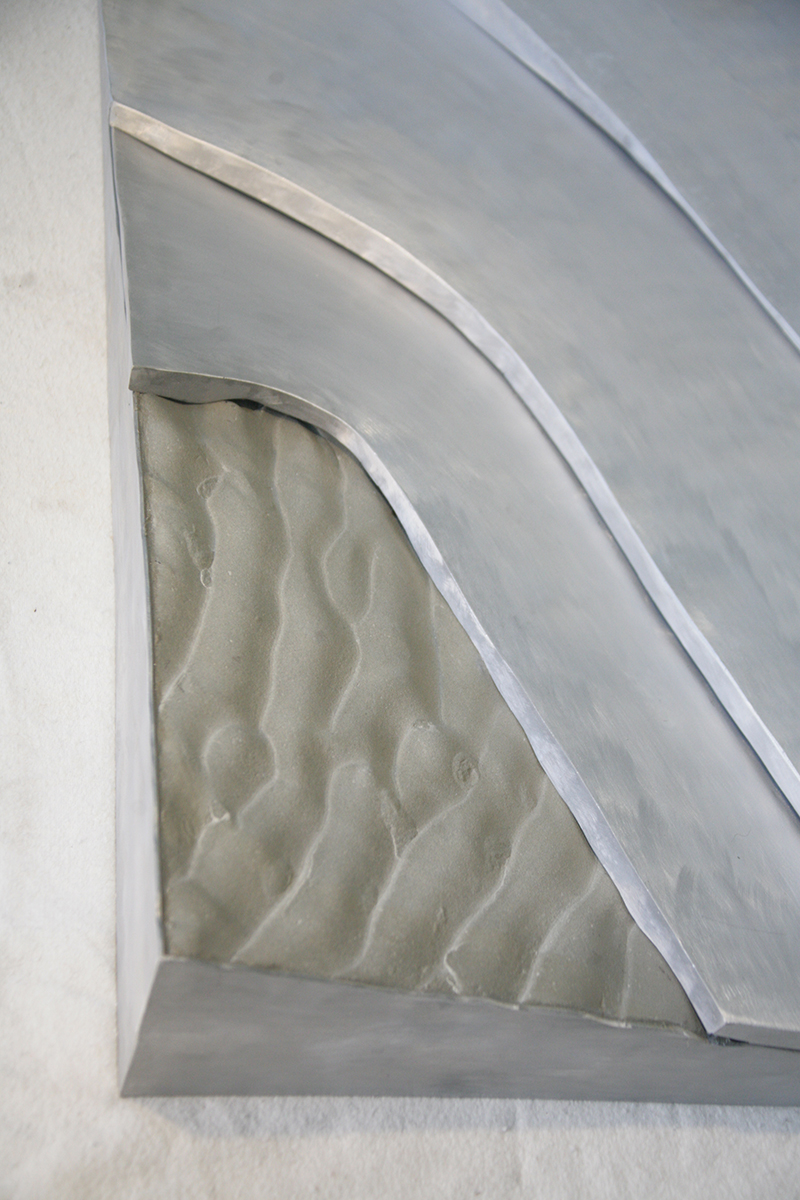Euneclasteia 7
Euneclasteia is not a series or subseries per se, but rather an intellectual lens that can affect the focus of any series. Thus the following can equally well apply to ‘Rhegmalogia’, ‘Piesterion’ or the others, and the piece title will so acknowledge. The salient feature of this format is a ‘zone’ of nonmetallic inclusions within the larger matrix if the piece.
More InformationThis name is a compound word, derivative from Ancient Greek. The key component is the central syllable: clast. This derives from the greek word for destroying or breaking, but spelled with a ‘c’ it is an English term in geology indicating “a fragment of broken-down rock, varying in size from silt-sized grains to boulders, invariably the products of erosion followed by deposition in a new setting” (from ‘The Concise Oxford Dictionary of Earth Sciences’, Allaby and Allaby).
‘Eune’ is Greek for bed. In geology, ‘bed’ and ‘bedding’ are common terms, especially in sedimentology, to wit bedding plane, foreset beds, etc. Sediment deposition is generally a very slow process; a thoughtful examination of any deep formation includes not only the weight of material, but the vast weight of time as well. In a more common, domestic context, other implications arise, such as those inherent in ‘marriage bed’, ‘deathbed’, and others.
The suffix ‘-eia’ denotes action, or process.
In concert, the reference to sediments encapsulated in an ice formation is overt, even obvious. It is hoped that the perceived implications do not stop there, but continue on to other dislocations, natural and human. An example regarding the latter is that we live in what has been called ‘the age of refugees’, with utterly unprecedented proportions of populations undergoing forced displacement. In this context, even beauty itself can be a metaphorical contributor to meaning.

